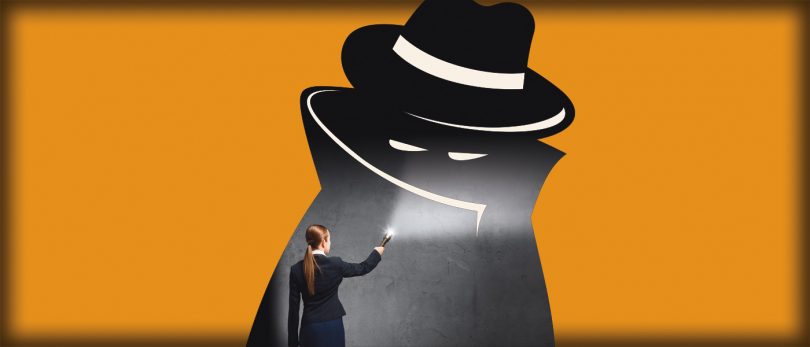8 steps to staying safe supported by data and experience
By Donna Shryer
You’ve heard other REALTORS’® stories concerning dangerous, on-the-job situations—but you haven’t completely embraced safety yourself. Maybe you’re afraid you’ll lose business, or you’re not sure which steps are worth the hassle.
So we’ve cut out the noise and developed the simplest and most effective strategies to help you stay safe—and these techniques could boost business once consumers know how seriously you take safety.
Take Action
In September 2014, Beverly Carter, a REALTOR® with impressive career success, showed a home to a seemingly harmless couple—a man and woman who identified themselves as a relocating married pair. They kidnapped Beverly and asked her family for a ransom. When the ransom went awry, Beverly’s captors became her murderers.
No “silver lining” can diminish this tragic ending, although Carl Carter, Beverly’s oldest son and a REALTOR® with eXp Realty in Little Rock, Arkansas, did use his mother’s story to create the not-for-profit Beverly Carter Foundation. In his mother’s honor, the Foundation jump-started a nationwide conversation about REALTOR® safety and initiated safety guidelines, safety training programs and safety classes through real estate organizations.
Foundation services and programs are provided free of charge to every MLS, association, brokerage and agent. In addition, the Foundation offers support and advocacy to agents who have been victimized on the job. The Foundation is currently working with federal, state and local government officials to pass laws that will improve safety within the real estate industry.
1. The Real Deal
Be honest about your safety risks. It’s important to admit that the nature of your business takes you into empty homes with complete strangers. “That doesn’t mean every showing gets a red alert,” says Carl Carter, a CRS member and a REALTOR® with eXp Realty, Little Rock, Arkansas. “It does mean you have to honestly assess each showing as a unique situation, conduct your due diligence, listen to your instincts and take precautions as necessary. I can’t emphasize enough that this goes for men as well as women.”
Carter is the founder of the Beverly Carter Foundation, a nonprofit safety organization dedicated to protecting real estate professionals and increasing safety awareness. Beverly was Carter’s mother and a successful REALTOR® who was killed while showing a property. (Read more about Carl Carter and the Beverly Carter Foundation in the sidebar “Take Action.”)
FOR THE RECORD: 39 percent of real estate professionals surveyed for the National Association of REALTORS® 2016 Member Safety Report have experienced on-the-job fear for their personal safety or the safety of their personal information.
2. Getting to Know You
Choose a public place to meet a new client for the first time. The ideal location is your office, since you can photocopy the client’s ID for proper vetting—something Carter feels too many REALTORS® skip. “We have a natural tendency to profile people as good—especially when it’s a married couple whose stories jive,” Carter says. “That’s exactly what happened to my mom.”
Neil Schwartz, CRS, broker-salesperson with Coldwell Banker Premier Realty in Las Vegas and authorized instructor for the NAR Safety Matters class, agrees, and he adds a warning: “If a home shopper insists on meeting you for the first time in an empty home, you shouldn’t be meeting with them at all.”
FOR THE RECORD: A typical REALTOR® meets only half of the prospective buyers and sellers that they do not know in a public location before viewing a home.
3. A Matter of Fact
Vet home shoppers prior to a showing. When scheduling your first meeting with a homebuyer—in a public place—ask them to bring a photo ID. Photocopy the ID or snap a photo with your smartphone. File a copy and then link into a program such as Verify Photo ID. Is the person handing you the ID the same person attached to the ID?
Be prepared to lose a few potential buyers who refuse to share identification, cautions Phil Faranda, New York broker/owner of J. Philip Real Estate. Faranda also served as a subject-matter expert when NAR created its safety program and is currently a Beverly Carter Foundation board member. “If the prospect won’t give you an ID, it’s a red flag. Walk away!”
FOR THE RECORD: “Knowing that you take steps to vet homebuyers and safeguard the seller’s property and personal safety is a significant benefit that should be discussed in your listing presentations. It sets you apart,” Faranda says.
4. Trust Your Gut
Vetting won’t always expose a red flag. If you’re at a showing, and your instincts tell you to get the heck out, follow these tips to expedite a swift exit.
When you arrive before the homebuyer, park in the street instead of the driveway, so you don’t get blocked in.
Always have the prospect walk in front of you when entering the home.
Until you know a buyer, never meet them for a showing after dark.
FOR THE RECORD: Background checks are not foolproof, Faranda warns. “I’m talking about someone who makes inappropriate advances or just seems sleazy. Only your gut instincts can detect these situations.”
5. A Clean Sweep
Don’t make the seller’s home a target. Often it’s the seller’s home that’s the actual target, but the REALTOR® pays the price by getting stuck in the middle of a home robbery, Schwartz says. “You have to help Mr. and Mrs. Seller prepare for strangers walking through their home. That means no jewelry on the dresser, no prescription drugs in the medicine cabinet and nothing lying around that could compromise the seller’s identity or financial security.”
FOR THE RECORD: “The seller will love your advice,” Schwartz adds. “What they hear is that you care about their safety and their home’s safety.”
6. Open and Shut Case
Have a buddy with you during open houses. This puts a second set of eyes—and gut instincts—on safety patrol. Have a signal worked out in case one person senses an unsafe situation.
Faranda also suggests inviting a vetted banker, lender or home inspector to be your open house buddy. “This gives your best experts an opportunity to build relationships with homebuyers, and it helps shoppers see you as someone with all the necessary experts ready to help them with the buying process.”
Carter also recommends moving the buddy system next door. “I introduce myself to the neighbors before an open house and ask them to call my cell if they see anything suspicious.”
Now the neighbor has Carter’s professional contact information and also knows how much he cares about everyone’s safety. “Guess who comes to mind when this neighbor needs a REALTOR®?” Carter asks.
FOR THE RECORD: Carter feels the time to be most careful is before an open house ends. “That’s when criminals know the house is typically empty and the agent is helpless.”
7. Empty Promises
Make sure vacant homes are truly vacant before showing them. Houses listed on the MLS as vacant may be hosting squatters. Before showing a home listed as empty, look for clues that someone may have broken into the house. If you see any of the following signs, do not enter the property and immediately call the police.
• Open doors or windows
• Wood pallets, boxes or step stools beneath windows
• Trash in the outdoor garbage cans
• A car parked in the driveway
FOR THE RECORD: According to Moby, a GPS-based tracking software developer, 56 percent of real estate pros surveyed reported feeling unsafe when entering empty homes.
8. Defensive Moves
Take steps to increase your safety. According to NAR’s 2016 Member Safety Report, here’s how many REALTORS® are ramping up their safety.
• 40 percent of REALTORS® have taken a self-defense class. After taking a self-defense course, 73 percent felt safer.
• 42 percent of REALTORS® installed a smartphone safety app to track their whereabouts and alert colleagues in case of an emergency. A similar approach is a safety alert device that sends a distress call with the push of a button.
FOR THE RECORD: Safety is not a one and done deal. “I see agents put their trust in one safety resource and get lazy about keeping their eyes and ears open,” Carter says.
While REALTORS® can take safety steps on their own, progress in this area needs to include leadership from brokerages and real estate boards, Carter says. “The industry as a whole needs to rethink how we establish and maintain client relationships. We do need to use our best business sense to stay safe.” 
For further information about ways to increase your on-the-job safety, check out the Beverly Carter Foundation; NAR broker resources (and click “Safety Resources” in upper-right corner) and the NAR-sponsored Safety Matters course.








